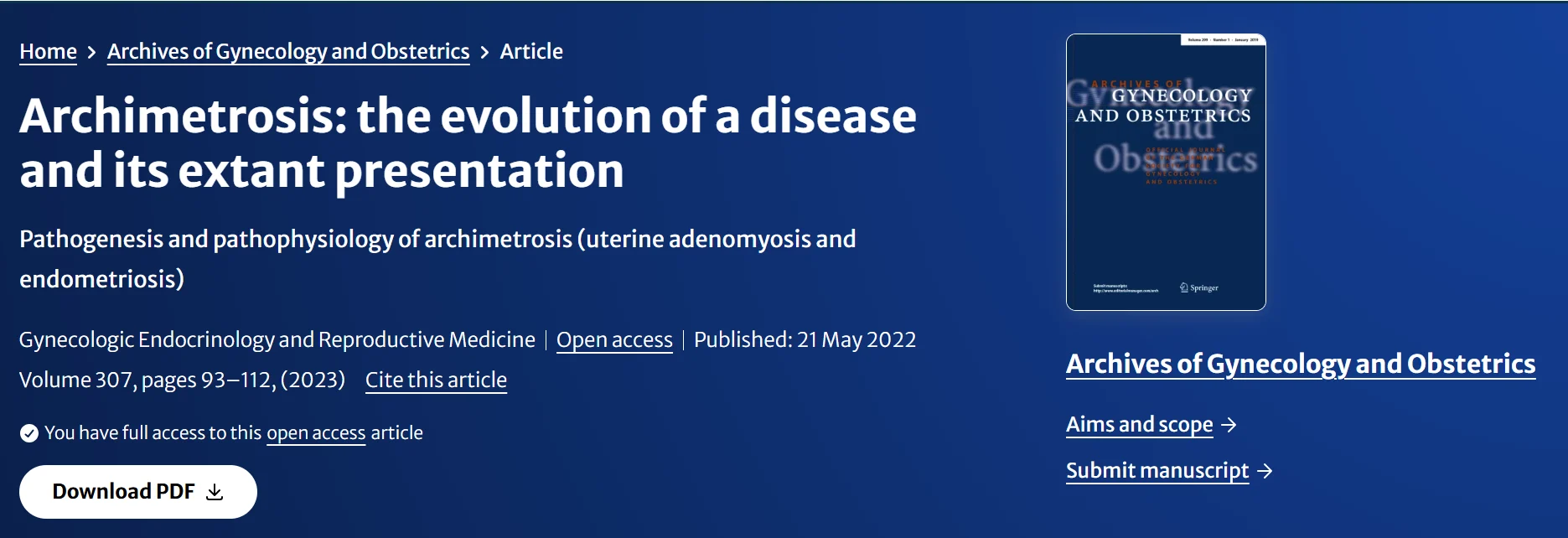
Marco Zaccaria: Pathophysiological Mechanisms of Endometriosis and Adenomyosis
Marco Zaccaria, Global Product Manager at H.S. Hospital Service SpA, shared a post on LinkedIn about a paper by Gerhard Leyendecker et al. published in Archives of Gynecology and Obstetric:
“What pathophysiological mechanism underlies the development of endometriosis and adenomyosis?
The basal endometrium plays a fundamental role, performing essential functions as an endocrine gland and triggering hyperestrogenism in the archimetrium.
In adenomyosis hyperperistalsis might result in myometrial dehiscencies that are infiltrated by basal endometrium with the secondary development of muscolar tissue.
Adenomyotic foci are usually localized in the posterior wall: early lesions present close to fundo-cornual-raphe of the archimyometrium ( change in the shape of the uterus which has a slight indentation or ‘arch’ at the top).
With their muscular component, the adenomyotic lesions might contribute to the increased intrauterine pressure.
The lesions are able to produce estrogen and may therefore be able to sustain their benign proliferative potential: that is why infiltrative endometriosis and adenomyosis may constitute progressive diseases, in rare cases even beyond the menopause.
Below is a link to a study on the pathogenesis and pathophysiology of this benign and debilitating condition.”
Title: Archimetrosis: the evolution of a disease and its extant presentation – Pathogenesis and pathophysiology of archimetrosis (uterine adenomyosis and endometriosis)
Authors: Gerhard Leyendecker, Ludwig Wildt, Matthias W. Laschke, Gerhard Mall
Read the full article.

-
Oct 11, 2025, 06:44The Global IVF Market Is Set to Reach $65B by 2032 – Meddilink
-
Dec 21, 2025, 02:55Epigenetic Links Between Paternal Age, Reproduction and Offspring Health – Reproduction and Fertility
-
Dec 21, 2025, 02:43Medicines and Pregnancy: ANSM Proposes New Labeling – B’RIGHT
-
Dec 21, 2025, 02:28Steven Palter: It is time to retire the out of date ‘2 week wait’ for pregnancy tests after IVF
-
Dec 21, 2025, 02:24Thorsten Waloschek: New Study Highlights Preeclampsia Risk Stratification Benefits
-
Dec 21, 2025, 02:15Siddhartha Yadav: New ASCO Guideline for Managing Cancer During Pregnancy
-
Dec 21, 2025, 01:56New Patient Resource on Thyroid Issues in Pregnancy – RCOG
-
Dec 21, 2025, 01:49CDC Releases 2024 Pregnancy Mortality Data – Preeclampsia Foundation
-
Dec 21, 2025, 01:30Caitlin Wyrwoll: New Insights on Maternal Health and Extreme Heat
-
Dec 20, 2025, 10:57Clare Pin-Chia Huang: New Research Links Maternal Diabetes to Pregnancy Risks
